CreativiTree Generating cool trees in Minecraft!
Progress Report
Project Summary
CreativiTree is a deep learning tool that “hallucinates” new images of Trees and generates them for the player in-game. CreativiTree is fed thousands of images of trees using generative adversarial networks in order to “hallucinate” new images of trees and then turning them into minecraft objects using malmo.
Approach
Following the orginal work of Ian Goodfellow on “Generative Adverserial Networks”, and consequently the work of several researchers from the University of Michigan on “Generative Adversarial Text to Image Synthesis”, this project focuses mainly on Image Systhesis (Hallucinating Images) and further explore its applications.
The Learning
In order for CreativiTree to “learn” about trees, we used a TensorFlow implementation of Deep Convolutional Generative Adverserial Network (DCGAN) that we found on github. This, along with thousands of 32x32 color tree images from the CIFAR-100 dataset.
We trained the DCGAN and found the higher number of epochs the better in general. The generated trees started looking better and better, but towards the end, the trees started looking strange. We think this is because the DCGAN is learning the background of the images, instead of the tree itself.
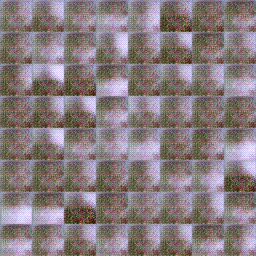
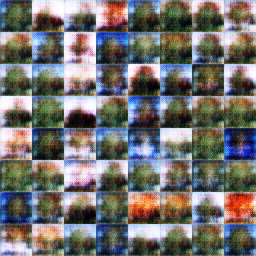
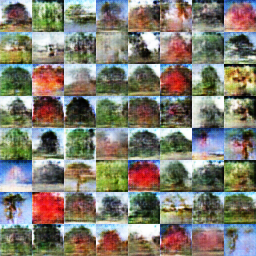
In the future, we would remove the background before training the GAN, instead of removing the background when we process the image in Malmo.
Malmo We used the Python Imaging Library to convert each image to RGB representations in Python. We then used the webcolors API, to convert each pixel to a color that can be rendered in Minecraft. At first, we needed to tweak the colors so that it would accurately convert to the correct colors, and the resulting (unscaled) images are as follows:
Next, we scaled the representations into 10x10 models, which looked kind of strange, but they were player size. Something we could improve on is scaling the images to look more like the unscaled versions.
The results of our prototype:
Unscaled 32x32 tree images converted into Minecraft:
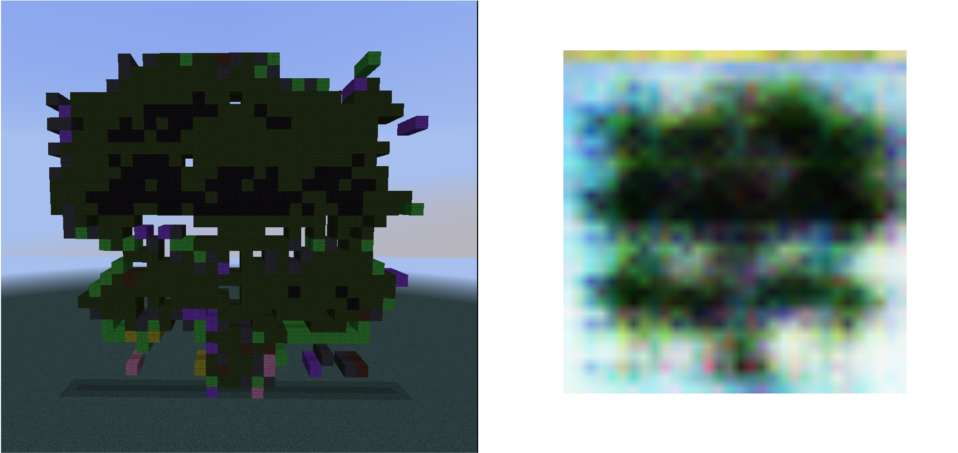


Scaled 10x10 trees in Minecraft (player size):
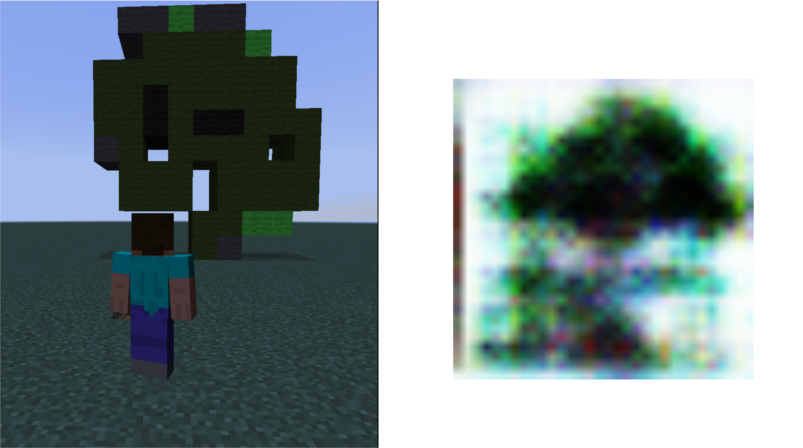

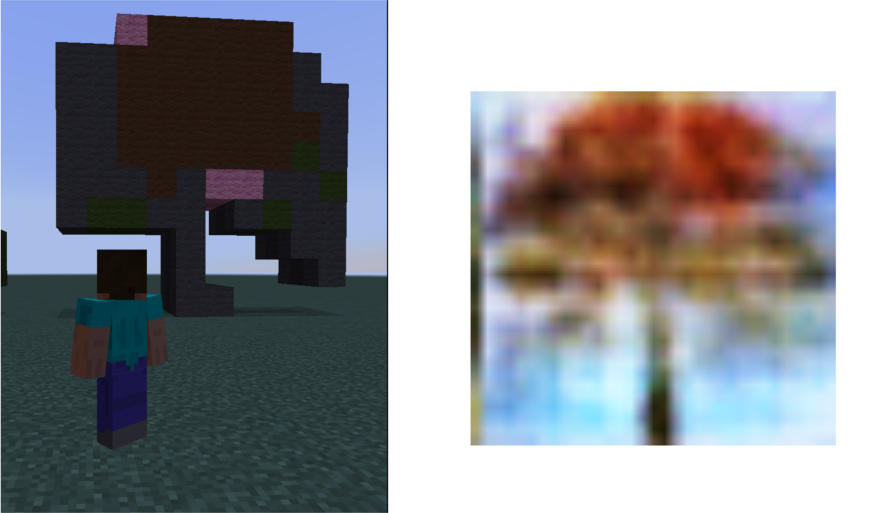
Final product

![]()
Evaluation
A large part of our evaluation is qualitative and we broke it down into two parts:
-
Did our project generate tree images that actually look like trees?
-
Do the Minecraft representations of the trees look like trees, and are they similar to the original images?
For the first evaluation, we analyzed the results of generator given different epochs. At first we trained the DCGAN using 35 epochs, which gave us somewhat-realistic looking images. After that we trained it using 45 epochs, which yielded even better results. From then on we trained an additional 65 epochs, which started to develop detailed and even more realistic-looking results. However, as the epochs approached 100, the GAN started learning the backgrounds of the trees, and generating strange looking trees, like they were on fire or pure blue sky. Images that came out of this 110-epoch neural net were hit-and-miss in the sense that some images looked good but others looked clearly strange, but as a whole we got enough samples for images that were suitable to use in Minecraft.
For the second evaluation, we converted the images into unscaled and scaled versions of the images in Minecraft. The unscaled images were much more realistic, and as seen above, they are quite good representations of the images! However, once we scaled the images down to 10x10 player size, the minecraft representation was not as similar to the original image, we think this is because of data loss in compressing the images, which dilutes the color in the image.
Remaining Goals and Challenges
Our prototype currently uses an off the shelf DCGAN in order to perform image synthesis. Our main objective over the next 2-3 weeks is to code our own Generative Adversarial Neural Network and have more flexibility when it comes to improving its individual parts in order to hallucinate more realistic looking trees.
We would like to remove the backgrounds from the dataset before training, as some of our epochs showed that the GAN was actually learning from the background instead of the tree image and shape itself (sometimes it was pure blue as in the sky).
In scaling the images, we would like to make the scaled versions of the images more realistic, and more representative of the unscaled images in Minecraft.
In addition, we would like to expand our DCGAN to generate images of objects other than trees.